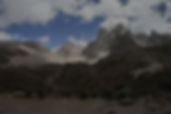Who We Are
A trusted co-steward in protecting, preserving, and enriching one of the most vulnerable UNESCO World Heritage sites in the world - Mt. Kenya. Mount Kenya's ecosystem is vital to both the Kenyan population and its economy.
Our holistic and partnership-based approach that puts people at the center of our programs in order to encourage collective responsibility in protecting and conserving forest, water, people and wildlife.

25
Years
In Operation
3M
Trees
Planted
5
Ranger
Teams
1500
Gain Access To Free Healthcare Services Monthly

Holistic Community-Centered Approach.
It is crucial that our projects are community driven in order to create a sense of collective responsibility towards conserving their ecosystem and for them to understand the value of responsible consumption through livelihood sustainable projects that provide best practices.
We also ensure access to free primary healthcare services to our communities in order to protect their wellbeing.

Healthy & Biodiverse Ecosystems
Mount Kenya, a UNESCO World Heritage Site facing numerous ecological threats, requires urgent and collective action from all stakeholders. The Mount Kenya ecosystem is well known for its essential biodiversity, geology and cultural importance that must be protected, appreciated and restored. Mount Kenya’s forests suffered considerably in the past decades, when large areas were cleared to provide timber and land for rapid population growth and urbanization and our wildlife equally suffers the consequences. Learn more about the strategies we employ to ensure wildlife and habitat protection.
PARTNERS
MKT augments sustainable development in the whole Mount Kenya ecosystem by collaborating with communities nonprofits, government agencies, and other allies.


























